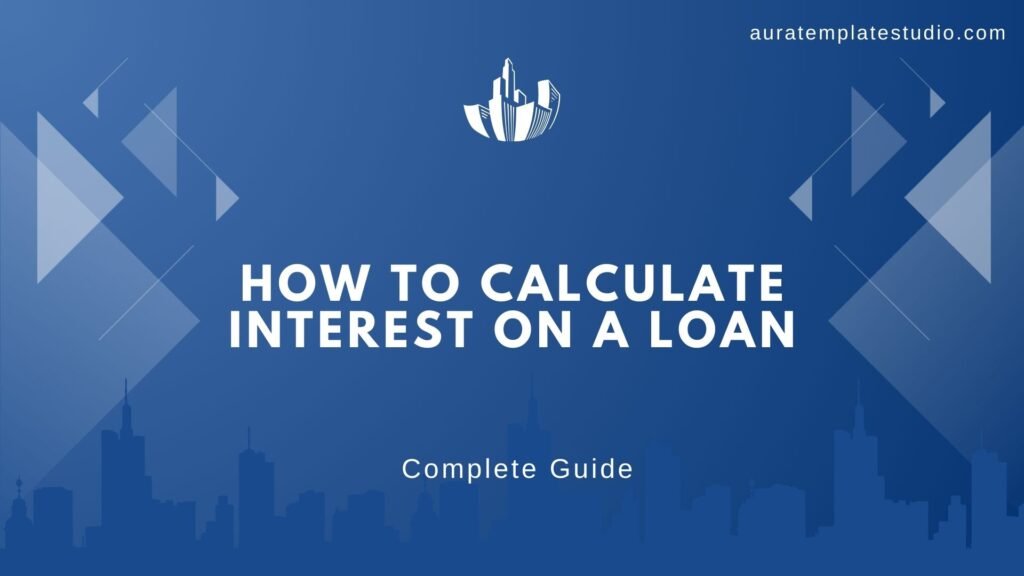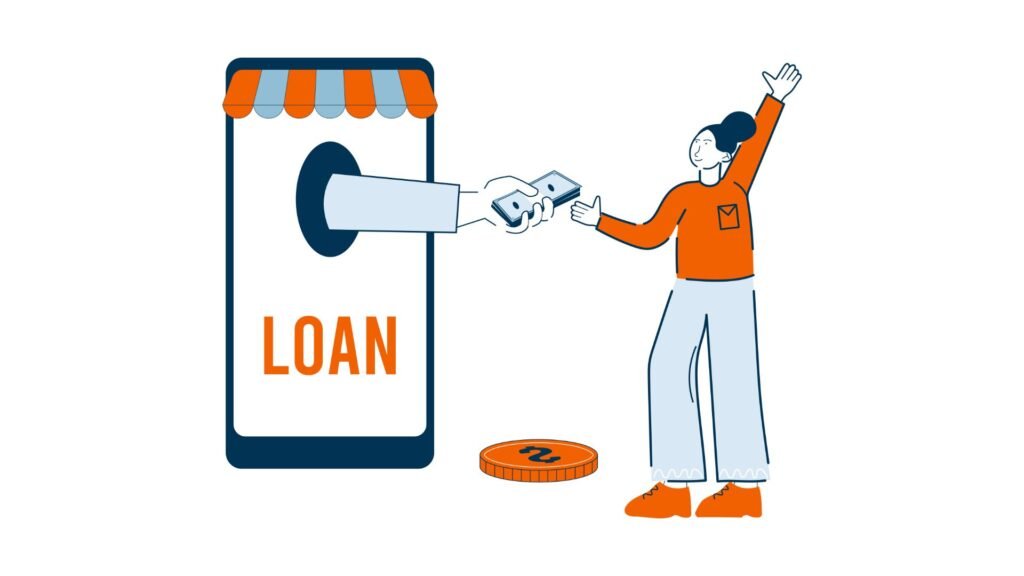
📚 Table of Contents
- Introduction
- What Is Loan Interest?
- Types of Interest
- Simple Interest
- Compound Interest
- Calculating Monthly Payments
- Amortization Formula
- Example Calculation
- Tips for Borrowers
- FAQs
Understanding how loan interest works is essential whether you’re taking out a personal loan, auto loan, mortgage, or business loan. Knowing how to calculate interest helps you compare offers, plan your budget, and avoid surprises. In this post, we’ll break down how loan interest is calculated, the formulas you need, and examples you can follow easily.
🔍1. What Is Loan Interest?
Interest is the cost you pay to borrow money. It’s how lenders make money from the loan. The amount of interest you pay depends on:
- The loan amount (principal)
- The interest rate (expressed as a percentage)
- The loan term (length of time you borrow the money)
- The type of interest (simple vs. compound)
📘 2. Types of Interest
2.1 Simple Interest
This is calculated only on the original loan amount.
Formula:
Interest = Principal × Rate × Time
Where:
- Principal = the amount borrowed
- Rate = annual interest rate (in decimal form, e.g., 6% = 0.06)
- Time = loan term in years
Example:
Borrow $10,000 at 6% interest for 3 years:
Interest = $10,000 × 0.06 × 3 = $1,800
You’ll pay $1,800 in interest, and the total repayment will be $11,800.
2.2 Compound Interest
This is calculated on the principal plus any interest already added.
Formula:
Total = Principal × (1 + Rate / n)^(n × Time)
Where:
- n = number of compounding periods per year (e.g., monthly = 12)
- Time = number of years
Example:
Borrow $10,000 at 6% compounded monthly for 3 years:
Total = $10,000 × (1 + 0.06 / 12)^(12 × 3) ≈ $10,000 × 1.1967 = $11,967
You’ll pay $1,967 in interest.
🧮 3. How to Calculate Monthly Payments
If you’re paying off the loan monthly, use the amortization formula:
M = P × [r(1 + r)^n] / [(1 + r)^n – 1]
Where:
- M = monthly payment
- P = loan amount
- r = monthly interest rate (annual rate / 12)
- n = total number of monthly payments
Example:
Borrow $10,000 at 6% interest for 3 years (36 months):
r = 0.06 / 12 = 0.005
n = 36
M = 10,000 × [0.005(1 + 0.005)^36] / [(1 + 0.005)^36 – 1]
M ≈ $304.22
You’ll pay $304.22 per month, and the total paid will be about $10,951.92.
✅ 4. Quick Tips for Borrowers
- Compare APR (Annual Percentage Rate), not just the interest rate — it includes fees.
- Use an online loan calculator for fast comparisons.
- Try to pay extra toward the principal to save on interest.
- Choose shorter loan terms to pay less in total interest (if affordable).

💬 5. FAQs: How to Calculate Interest on a Loan
❓ What is interest on a loan?
Interest is the cost you pay a lender for borrowing money. It’s usually expressed as a percentage of the loan amount and is charged over time.
❓ What is the difference between simple and compound interest?
Simple interest is calculated only on the original loan amount (principal), while compound interest adds interest on both the principal and any previously accumulated interest.
❓ How do I calculate simple interest?
Use the formula:
Simple Interest = Principal × Rate × Time
Example: A $5,000 loan at 6% annual interest for 3 years =
5,000 × 0.06 × 3 = $900 total interest.
❓ How is compound interest calculated?
Use the formula:
Compound Interest = Principal × (1 + Rate/Compounding Periods)ⁿ − Principal
Where n is the total number of compounding periods.
Example: $5,000 at 5% compounded annually for 2 years =
5,000 × (1.05)² − 5,000 = $512.50 interest.
❓ What’s the difference between interest rate and APR?
Interest rate is the percentage charged on the loan amount.
APR (Annual Percentage Rate) includes the interest rate plus fees, giving a more complete view of the loan’s true cost.
❓ How do I calculate monthly payments for a loan?
Use the amortization formula or an online loan calculator. It takes into account the loan amount, interest rate, and loan term to determine equal monthly payments.
❓ Can I reduce the amount of interest I pay?
Yes. You can:
- Pay more than the minimum
- Make extra payments toward the principal
- Refinance to a lower interest rate
- Choose shorter loan terms
❓ Why does compounding frequency matter?
The more often interest compounds (monthly, daily, etc.), the more total interest you’ll pay over time.
